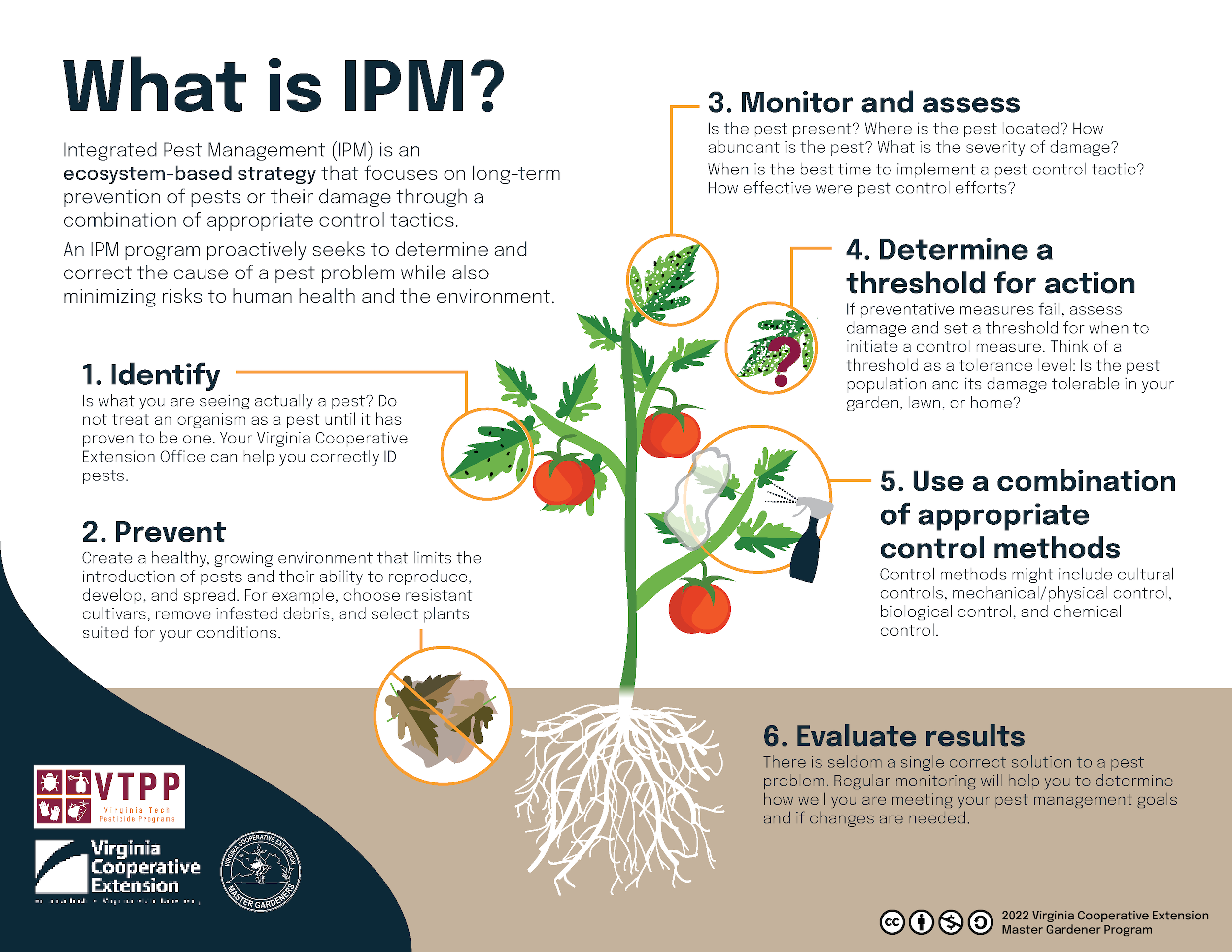10 Easy Facts About Pestwise Shown
10 Easy Facts About Pestwise Shown
Blog Article
Pestwise - An Overview
Table of Contents4 Simple Techniques For PestwiseIndicators on Pestwise You Need To KnowNot known Details About Pestwise Fascination About PestwiseSome Known Factual Statements About Pestwise Indicators on Pestwise You Need To KnowNot known Factual Statements About Pestwise

Q. Define "integrated parasite administration" (IPM) and list several feasible control strategies that may be used in an IPM approach. A. Integrated bug management is the incorporating of proper bug control strategies right into a single strategy to minimize bugs and their damage to an appropriate level. Bug control strategies might consist of: host resistance, biological control, social control, mechanical control, sanitation, and chemical (pesticide) control.
Pestwise Fundamentals Explained
What can you do to maintain the insects you are attempting to regulate from becoming resistant to the chemicals you use? A. Insect resistance can be minimized by utilizing integrated bug monitoring and rotating the types of chemicals made use of.
Insects are a critical risk to the farming service, and integrated parasite management helps growers address and alleviate these dangers. Integrated parasite monitoring utilizes several methods in facility, thus being a more effective service to the issue. Termite Control. In certain, getting rid of aggressive chemical approaches allows for reducing damage to individuals and the environment by utilizing all-natural and much safer choices instead
The Ultimate Guide To Pestwise
The goal of integrated parasite administration is to reduce this harm and control acceptable problem levels rather than get rid of all undesired populations. This is why it is vital to comprehend what steps are warranted in each case and use hostile ones only when various other integrated monitoring techniques don't work. Integrated administration alleviates the negative effects of a non-IPM method, and the main advantages of IPM Benefits of IPM.
A proper understanding of the invasion scope establishes if the issue needs to be attended to. are the next elements of an IPM program because it is necessary to understand if the organisms make prospective dangers and decide on the integrated monitoring alternatives or the certain chemical use. mean to lower invasions by using different agronomic methods.
Fascination About Pestwise
if prevention was inefficient. Integrated monitoring options in an IPM program beginning with more secure to much more aggressive ones. Target or program chemical splashing might adhere to hand-operated elimination or capturing that hasn't aided. The go to website prior integrated monitoring aspects aid understand just how to plan and implement an IPM program step by action: Display your plants on a regular basis.

Amongst others, IPM cultural techniques consist of the complying with area management strategies: soil treatment; option of suitable plants; plant turning; interplanting or strip cropping; option of growing days; weed control; use of trap plants. Favorable dirt problems speed up plant growth, and energetic plants are more resistant to problems. Healthy and balanced seedlings and seeds determine effective plant development, so it is vital to choose pest-free planting product with solid origins.
Thus, amongst other applications, crop rotation can be properly made use of as an integrated bug management method. Pests spread slower if rows of different crop kinds separate their host plants in intercropping or strip cropping, which is also utilized in the integrated bug administration system. Alternatively, infestations enhance when plants of the exact same crop type or family members expand with each other.
, as well as tomatoes. Planting trap plants in spots is an additional choice for IPM intercropping. This integrated parasite monitoring technique suggests attracting parasites to details plants and after that controlling them with chemical or mechanical methods.
An Unbiased View of Pestwise
Obstacles are typical examples of physical IPM techniques. Fully grown bugs or their eggs and larvae are accumulated by hand and ruined.

Division of Plant Sciences. University of Missouri. Dirt solarization is an effective integrated monitoring technique to sanitize the area by heating it in a natural method. This incorporated administration approach implies a typical method of damaging pests by predators, parasitoids, microorganisms, and other biological control agents (aka antagonistic organisms). The function of organic control in IPM is to.
Excitement About Pestwise
With time, their population became a real hassle to farmers together with native kangaroos or dingoes. The walking cane toad is another case illustrating incorporated organic control failure hereof when it refused to quest the target varieties and ended up being a parasite itself. Parasitoids create on or within their hosts to ultimately kill them after maturing.
Report this page